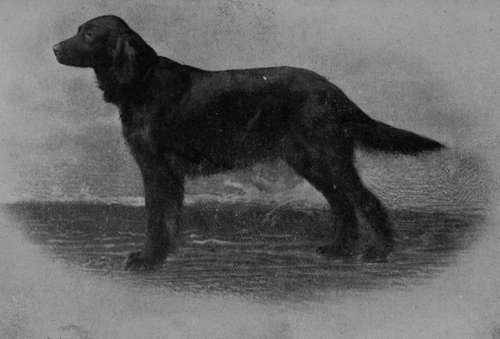The Irish Setter
Description
This section is from the book "Sporting Dogs. Their Points And Management In Health, And Disease", by Frank Townend Barton. Also available from Amazon: Sporting Dogs; Their Points and Management in Health and Disease.
The Irish Setter
The origin of these dogs, as in many other breeds, is enshrouded in mystery. The theory that they have been derived from Red Spaniels, crossed with the Bloodhound, is accepted by some breeders, the traces of Hound blood being observable in their method of working (scenting their game), so much objected to, by many sportsmen.
In Ireland these Setters have been, and still are, greatly used for snipe shooting, being hardy, fast, and very keen-nosed—their ability to bear fatigue, and cold, being unequalled by any other variety of Setter.
It has been said that the finest and oldest strain of Irish Setters have a slight tinge of black on the tips of the ears and muzzle ; others, again, regard the presence of black hairs as a sign of impurity of blood, agreeing that these dogs ought to be a very deep, rich red—a dark or blood red being preferred. White hairs ought not to be present anywhere, excepting on the forehead and chest, though many object to white in the situation last named.
The Coat should be close, of strong growth, and neither coarse nor silky in texture. Feather of a golden tinge, and of moderate amount.

Irish Setter Dog.
Ears
To be long, set low on the head, and have a medium degree of feathering.
Eyes
A deep hazel or brown, and the nose dark or mahogany flesh. A black nose should disqualify.
Neck
Of fair length, slightly arched, and body proportionately long ; the chest deep, and ribs well sprung.
Fore Legs
Straight, not too much feathered, and the feet small, firm, and close, with well-arched toes.
Strong Loins, powerful thighs and hocks, and a horizontal carriage of the tail (not cocked) are excellences in this region.
Taken as a whole, the Irish Setter is built more after the type of a racer. Moreover, has a little wider skull than the English variety.

Irish Setter Champion Florizel (Property of Mrs Hamilton).
Continue to:
